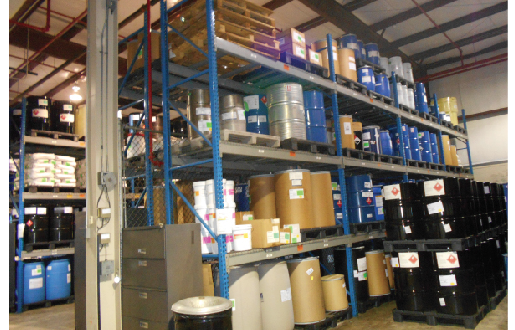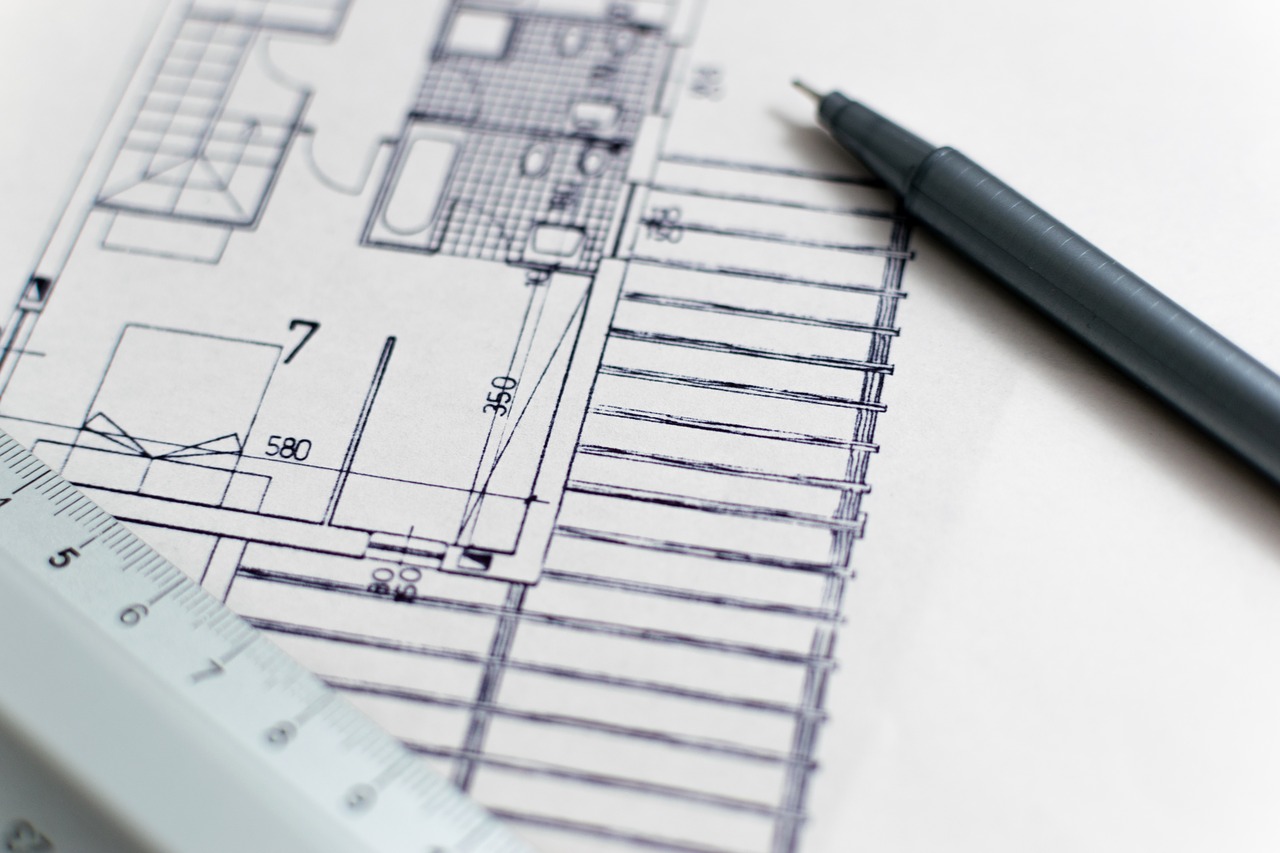
Protecting Flammable and Combustible Liquid Operations
It’s Not Always a Matter of Surround and Drown
As one involved with industrial fire protection engineering for more than 25 years, you would expect very few surprises to cross your desk. However in the ever changing, technology enriched world in which we live, change is the only constant.
One of the more challenging aspects of our trade lies in the protection of industrial chemical processing facilities and specifically those who use, store and create flammable and combustible liquids. I am often amazed and at times bewildered at the imagination of chemists. Who would have ever thought to mix a little of this and a little of that to come up with something that didn’t exist last month and will become a common household item sold on store shelves within the next year or less. The innovative imagination of those chemists and scientists is what creates for us the challenge of determining how to protect such facilities. As the fire protection engineer, where do we find the data and how do we put it all together to reach a result that meets Codes and provides the level of protection appropriate for the hazard? As a contractor or AHJ (Authority Having Jurisdiction) how do I know if the design I’m looking at is right?
We’re going to be addressing this subject primarily from the engineer’s perspective but much of this information can also be used as a starting point by an AHJ to review the validity of the design.
There are some basic steps and readily available information that can be used to determine how the fire protection systems for this facility should be designed. In contrast, there are also cavernous holes where there is nothing or very little information regarding this new innovation that has just come upon your desk, but do not despair. One point of clarification, naturally one article cannot delve into all aspects involved in this type of analysis since there are many factors to be analyzed to reach the final design criteria in these kinds of facilities. This discussion is limited to one facet in the vast overall topic of protection of flammable and combustible liquid operations.
Where to Start
- Get the list. If you are responsible for the engineering effort you should have received a chemical inventory list from a process engineer or owner. With that list you should also receive or request the Safety Data Sheets (SDS, formerly referred to as Material Safety Data Sheets) on everything on the inventory list. As an AHJ, if the engineer of record did not include the hazards on the engineering documents, request the chemical inventory list. A good engineer will document the basis of their design criteria by stating for example that the design is based on the presence of Acetone as the primary hazard. As the EOR, the more info you provide on your documents, the fewer questions will arise with regard to the validity of the design. Just stating “protect per NFPA 30” is not sufficient nor does it provide any record of the basis of design should questions arise in the future.
- Determine the classification of materials. If the chemicals haven’t been categorized by their classification such as flammable, combustibles, corrosives, water reactives, etc., that’s the first step. Then break them down into sub-groups like flammable Class IA, IB, Combustible Class II or IIIA or IIIB, etc. Then sort them once more into groups of miscible (water soluble) or non-miscibles. Be careful with the Class IA and IB materials when classifying them. Pay attention to that boiling point value. Class IA materials have some very specific requirements not required of Class IB materials.
- Review Section 5 of the SDS, Firefighting Measures. Understand that these recommendations apply to the manual firefighting effort, but the types of methods recommended can correlate to the type of fixed, automatic systems that can be considered. Typically you’ll see a list such as, “Foam, water spray and water fog, do not use straight stream.” So what does that tell you? Well I now know that foam is a viable option and probably recommended for a reason, but water spray (sprinklers) may be acceptable as well. Often this is related to the quantity involved in the incident. Straight stream doesn’t mean anything in particular to me from a fire sprinkler design standpoint. One thing to note is that water fog doesn’t mean I can use a water mist system, remember, this is about manual firefighting. Not everything crosses over to sprinkler design. So now we keep digging.
- Know what types of containers. You will need to know the type of container in which the material is stored or in process. Is it a pressure vessel, or 55 gallon drum or plastic tote or something else? As you examine different design schemes within NFPA 30, the type of the container is a critical piece of information.
- Know the operating conditions. When it comes to chemical processing structures, additional information will be required regarding the temperature of the materials while in process and the pressure in which they appear in the process. These two factors can dramatically change the physical characteristics of the materials should there be a leak or spill. A leak in a pressurized system can result in an atomized discharge which can often be more easily ignited as opposed to a steady, solid stream at atmospheric pressure. The class of a material when heated above its flashpoint can be changed at times one or two categories. It is not uncommon for a Class IIIA or IIIB liquid to be considered the same as a class I flammable with regard to its flashpoint when the material is heated above its flashpoint. Understanding the process is often just as important as knowing what hazards are present. Also with regard to operations, when dealing with storage facilities you will need the rack arrangement, height, number of rows, aisle widths, types of containers whether they are relieving type or not.
- Find other resources. When SDS info is sketchy, another resource to consider is the U.S. Department of Transportation Emergency Response Guide. This can be downloaded for free from http://phmsa.dot.gov/hazmat/outreach-training/erg. At the bottom of most SDS in section 14, Transportation Information, there is typically a UN number. Below is how you may see it indicated:
DOT (Department of Transportation):
PROPER SHIPPING NAME: Combustible Liquid Nos (Diesel #1, Diesel #2)
HAZARD CLASS: Combustible Liquid
IDENTIFICATION NUMBER: UN 1993
Go to the emergency response guide and if you download the PDF, you can search for the UN number and find a Guide Number. For this material the Guide Number is 128. Under that Guide, you will find more information on response and handling of the material. Just like the firefighting information on the SDS, the Guide provides often more detailed information on firefighting for the type of material listed.
Other resources are of course Insurer Data Sheets and also industry-published guidelines. The latter are often easily found by simple online searches. Disclaimer: If you are not familiar with reading and interpreting SDS or chemical information, seek out the appropriate design professional to assist with this step.
The Design
Once all the information is in place, the next logical destination on this journey is NFPA 30, Flammable and Combustibles Liquids Code. But once you’ve opened NFPA 30, there is often a decision to be made on the media to be used for fire control/suppression which is, do I use foam, foam-water, or is water alone going to be sufficient? The decision to use foam or just water is a design decision that can often not be as simple as it may sound.
So how do you decide: to foam or not to foam? That is our question for this discussion. Back to the SDS.
Let’s take a look at the firefighting portion of the SDS, does it list foam as one of the means for extinguishment?
What is the specific gravity of the material? If it is less than 1.0 with 1.0 being equal to water, it will float on the water. Agitation may be required to achieve proper dilution to increase the material’s flashpoint temperature to where it cannot be ignited otherwise the material floats on the surface of the water and continues to evaporate producing potentially ignitable vapors.
Is the material a polar solvent or hydrocarbon? Basically, for the purpose of our design decisions, flammable and combustible liquids are typically categorized as one of two basic groups: Polar Solvents or Hydrocarbons.
Verification of this can in most cases be accomplished by reviewing the SDS information. In Section 9 – Physical and Chemical Properties look for the words “miscible” or “soluble.” If it says that the material is soluble in water, you have a polar solvent.
The essential difference for our discussion being, polar solvents are soluble in water and typify such liquids as alcohols, ethanol, methanol. Polar solvents are typically the product of a distilling process.
Hydrocarbons are typically non-miscible (will not mix with water) and examples are gasoline, kerosene, diesel fuel. Hydrocarbons most often originate from petroleum based products.
Since hydrocarbons will most often not mix with water it is best to pursue the use of foam especially if you have the potential of a pool fire scenario.
If the material is listed as soluble in the SDS, look at the Solubility Factor. If the value for solubility is less than 0.1 g/100mL, the material will not mix well with water and is considered insoluble for our purposes. The closer the value to 0.1 g/mL, the less likely the material is to mix with water to achieve adequate dilution without extreme and continued agitation. So while it might be considered soluble for the sake of chemistry, for fire control/suppression purposes related to sprinkler systems, it is not. We’re not going to attempt an organic chemistry lesson here on polar versus non-polar and how molecular bonding works but suffice it to say that there are exceptions to the base rules and there are times when a deeper understanding of the molecular makeup of components is needed. Time to go find that guy in the lab coat…
But it’s water soluble
I have often heard the argument that if the material is soluble (able to be dissolved in water) that water soluble liquids can be diluted so you do not need a foam agent to achieve fire control in a pool fire situation. However this is not always the case.
For example, Ethylene Oxide (EO) is a flammable, explosible gas at atmospheric pressures and ambient temperatures over 50° F. At temperatures below 50° F, the material can be held in a liquid state. To maintain liquid state in storage, the material is kept at 23° F under a nitrogen pad.
The material in liquid state is considered a Class IA flammable liquid with a flash point of -4° F and a boiling point of approximately 51° F. It is completely miscible in water but may not mix thoroughly without agitation due to the differences in density. The material has a specific gravity of .875 (water = 1.0) and a vapor density of 1.5 (air – 1.0). The flammability limits of vapor are between 3-100 percent with the ability to burn in an oxygen deficient atmosphere due to the material’s ability to generate its own oxygen.
Extinguishment of EO is difficult without sufficient dilution. In closed systems or areas, a dilution ratio of 100:1 water to EO is required to produce a mixture whereby the vapor will not support ignition. In open areas, a ratio of greater than 22:1 water to EO is considered sufficient to reduce the likelihood of ignition of liquid EO. However, in open areas the water to EO ratio of anything less than 22 (some sources use 24):1 water to EO can still generate sufficient vapors to support combustion.
So while EO is water miscible, it is going to take a considerable water supply to dilute the mixture even to the point of minimizing vapor release let alone achieve a sufficient dilution to render it unignitable. Also don’t forget that in order to dilute EO there has to be agitation. Agitation and foam blanketing are not compatible since agitation will result in destruction of the foam blanket. EO is one extreme example of soluble materials that pose a higher than average firefighting challenge.
Sound like fun yet?
Moral to the story – do not assume that just because a material is water soluble that water alone can achieve the desired fire control or extinguishment from your sprinkler system.
Generally, for fixed fire protection systems, foam is suitable and often preferred/recommended for areas where a pool fire scenario of flammables and/or combustibles are considered a possibility. Foam is also common and highly recommended when dealing with fires where hydrocarbons are involved.
Foam is of little use where your primary hazard will be a three-dimensional or pressurized discharge “jet” fire. Foam can aid in providing an insulating layer on vessels to create a minimal heat barrier but it is not an automatic equal to passive fire rated coatings when fire resistance ratings are required for vessels and or structures.
Water-only sprinkler systems can be effective when the fuel loading is minimal. What “minimal” means is subjective. That really depends on the material. For some liquids a gallon is not considered minimal as some 1A liquids are highly volatile and can present a significant fire challenge. What is minimal is up to the discretion of the design professional and at times may require input from the owner’s risk management or underwriter based on historical loss data related to the process or materials present.
When areas are handling or storing large quantities of flammables and combustibles, secondary containment may be required to contain or control spills. You must know whet`her the secondary containment scheme is to contain spills within the space or to use remote impounding where all spills from vessels and discharge of fire sprinklers are evacuated from the space to an external holding area. When the containment system is designed to evacuate the spill, using foam may not be of any advantage since it could also be quickly evacuated from the area and not allowed to blanket the floor area. If there is no spill to blanket, there may not be any advantage to using foam in your system design.
One caution when choosing foam as a firefighting additive, always consult with your foam vendor and use the discharge criteria they provide based on the specific hazardous material. Do not automatically assume you can use the minimum 0.16 gpm/ft2 you find within NFPA standards as that is just the minimum acceptable value. It is not the automatic “go to” value just because you have foam in your system. There are times when the hazardous material may only require 0.16 but other conditions such as an open building may require you to use a higher discharge values due to weather conditions or the presence of pressurized systems where a jet-fire conditions could occur. Low discharge rates are often inadequate against these types of conditions. Other determining factors related to density can be whether the system is a closed head sprinkler system or open head deluge system.
For industrial chemical projects, an understanding of the operation and the chemicals that go into the process is essential in selecting the proper design criteria. Sometimes it’s pretty easy and straight forward, other times not. The fire protection professional has to be aggressive in their desire to constantly expand their knowledge of science and technology as it relates to our discipline and especially in the world of special hazards. For some projects, the chapter hasn’t even been written yet that addresses the “how to” regarding design. Maybe you’ll be the one to write it.
 ABOUT THE AUTHOR: Craig Prahl is currently the fire protection group lead and subject matter expert (SME) for CH2M SE Regional Design Center. CH2M is a global engineering, construction management, design-build, multi-faceted firm employing over 26,000 employees. Prahl has been involved in fire protection engineering and construction since 1989 with a primary focus on domestic and international special hazards industrial fire protection projects.
ABOUT THE AUTHOR: Craig Prahl is currently the fire protection group lead and subject matter expert (SME) for CH2M SE Regional Design Center. CH2M is a global engineering, construction management, design-build, multi-faceted firm employing over 26,000 employees. Prahl has been involved in fire protection engineering and construction since 1989 with a primary focus on domestic and international special hazards industrial fire protection projects.

 Sprinkler Age A Publication of the American Fire Sprinkler Association
Sprinkler Age A Publication of the American Fire Sprinkler Association
